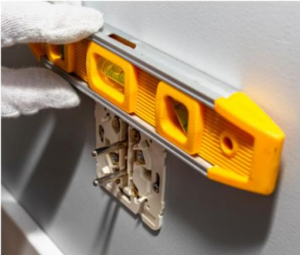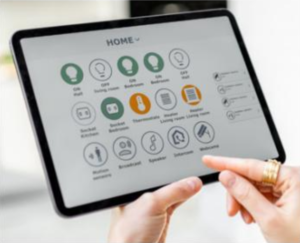Pre-Installation Assessment
Before beginning the installation process, it is crucial for the installer to conduct a thorough assessment of the windows and the surrounding environment. This assessment involves inspecting product for damage, examining the wiring and power sources, and evaluating the structural integrity of the window frames and placement for the power source. Understanding the specifics of the installation site helps the installer anticipate challenges and potential issues even before installing the mounting brackets.
Power Source Requirements
Unlike manual window treatments, motorized options require a power source to operate. The installer must assess the availability and proximity of electrical outlets or wiring to power the motorized system. In some cases, the installer may connect multiple power cables until the desired length is achieved. In other situations, the installer may need to collaborate with an electrician to ensure proper electrical connections are made. Alternatively, battery-powered options can be considered if the installation site does not have accessible electrical outlets.

Wiring and Integration
If the chosen motorized window treatment relies on a hardwired system, the installer must handle the wiring aspect of the installation. This involves concealing and routing the electrical wires discreetly within the window frames or adjacent walls. It is essential to ensure that the wiring is hidden from view while remaining easily accessible for future maintenance or repairs. Additionally, if the window treatment is part of a larger smart home system, one of two outcomes are expected: 1) the installer must integrate the motorized shades with the existing automation infrastructure, such as connecting to a central control panel or a smart home hub, and 2) the installer simply tests the shade’s functionality and hands off the integration part to an AV company.
Programming and Testing
Once the motorized window treatments are installed and wired correctly, the installer must program and test the functionality of the system. This step involves setting up the desired operating parameters, such as adjusting the opening and closing positions, setting timers or schedules and synchronizing multiple treatments if applicable. Thorough testing ensures that the motorized window coverings function smoothly and respond accurately to commands, providing a seamless user experience.

User Education
Part of the installation process includes educating the end user on how to operate and maintain their newly installed motorized window treatments. The installer should demonstrate the various control options, whether through wall-mounted switches, remote controls, smartphone apps or voice commands if integrated with a smart home system. Clear instructions on care and maintenance should also be provided to ensure the longevity and optimal performance of the motorized window coverings, including remote controls, battery wands or motor chargers.
Installing motorized window treatments requires additional considerations and steps compared to their manual counterparts. From assessing the installation site to handling electrical requirements, wiring, programming and user education, installers play a crucial role in ensuring a successful installation process. By going the extra mile, installers can deliver exceptional customer experiences and provide homeowners with the convenience, style and energy efficiency they seek from motorized window coverings.
Obviously, if the installer is involved early on in the sales process including planning for the best power source and measurements, the installation part would be a breeze and the entire experience would be exception for all parts involved including the dealer, installer and homeowner.

Roger Magalhaes is the founder of Trading Up Consulting, which provides installation training for window fashion professionals. Magalhaes has more than 15 years of experience as a professional window treatment installer in the Boston area. He is also the installation instructor for the Window Fashion Certified Professional FastTrack program and is the president of Window Coverings Association of America. » TradingUpConsulting.com



